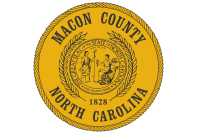Creating the park: the early years
1900s
Logging and lumber companies built railroads, camp towns and timber camps, slashing across the landscape while fueling an economic boom.
1923
National Park Service Director Stephen Mather voices his support for creation of a national park in the East.
1925
A Southern Appalachian National Park Committee is sanctioned to scout locations for a park. Proponents in North Carolina and Tennessee join forces and lobby for the Great Smoky Mountains.
Related Items
1926
President Calvin Coolidge signs a bill endorsing the establishment of Great Smoky Mountains National Park. Fundraising begins.
1927
John D. Rockefeller Jr. pledges $5 million for land acquisition. The money will only be made available when the two states can raise enough funds to match the donation.
1927
North Carolina appoints a commission to begin buying land for the park.
1930
Representatives from both states including Gov. Henry Horton of Tennessee and Gov. Max O. Gardner of North Carolina travel to Washington, D.C., to present 158,876 acres in deeds to the U.S. government. It is enough land to get a park started. The National Park Service sends the Smokies’ first superintendent and a crew of rangers to monitor and protect the area.
1933
The Civilian Conservation Corps is created, providing a large labor pool of young men to build roads, trails, campgrounds and park buildings. The Smokies was home to more CCC workers than anywhere else, with 4,350 men in a total of 17 camps up and running within the first year. Their work continued for nearly a decade.
1933
A motor access road across Newfound Gap, elevation of 5,046 feet, connecting North Carolina and Tennessee was opened.
June 15, 1934
Congress passes legislation creating the Great Smoky Mountains National Park, realizing the dream of the many who had supported the idea so vehemently.
Sept. 2, 1940
Thousands gather at Newfound Gap to hear President Franklin Delano Roosevelt dedicate the park. Standing on the recently finished Rockefeller Memorial, with one foot in each state, FDR speaks of the importance of preservation, but also of the growing conflict in Europe.
1941
Park visitation tops 1 million for the first time. By 2000, visitation peaks at 10 million visitors a year, but dropped back to 9 million by 2008. The Smokies continues to see more visitors than any other park.









